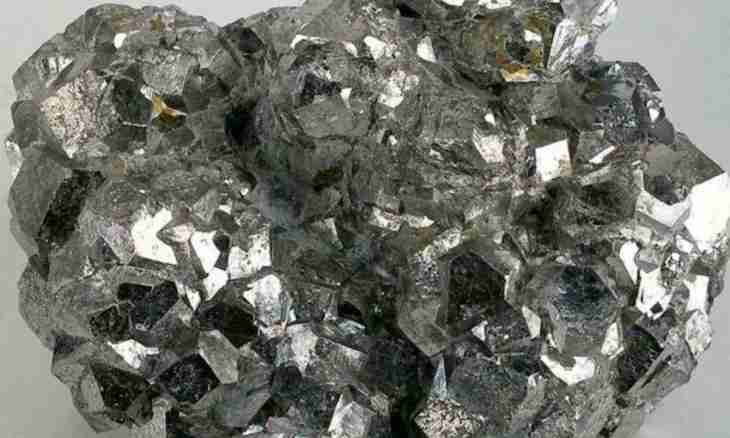In the periodic system of elements of D.I. Mendeleyev silver has serial number 47 and the designation "Ag" (argentum). The name of this metal probably came from Latin "argos" that means "white", "shining".
Instruction
1. Silver was known to mankind in the IV millennium B.C. Ancient Egypt called it even "white gold". This precious metal meets in the nature both in a native look, and in the form of compounds, for example, of sulfides. Silver nuggets have big weight and often contain impurity of gold, mercury, copper, platinum, antimony and bismuth.
2. Chemical properties of silver. Silver belongs to group of transitional metals and has all properties of metals. However the chemical activity of silver is small – it is in an electrochemical number of tension of metals more to the right of hydrogen, almost right at the end. In connections silver most often shows oxidation level +1.
3. Under usual conditions silver does not react with oxygen, hydrogen, nitrogen, carbon, silicon, but interacts with sulfur, forming silver sulfide: 2Ag+S=Ag2S. When heating, silver interacts with halogens: 2Ag+Cl2=2AgCl ↓.
4. Soluble nitrate of AgNO3 silver is used for high-quality definition halogenide ions in solution – (Cl-), (Br-), (I-): (Ag+)+ (Hal-) of =AgHal ↓. For example, in interaction with chlorine anions silver gives an insoluble white deposit of AgCl ↓.
5. Why silver products darken on air? The reason of gradual darkening of products from silver is explained by the fact that silver reacts with the hydrogen sulfide which is contained in air. As a result of it on the surface of metal Ag2S film is formed: 4Ag+2H2S+O2=2Ag2S+2H2O.
6. How does silver interact with acids? With the diluted hydrochloric and sulfuric acids silver, as well as copper, does not interact as is metal of low activity and cannot force out from them hydrogen. Acids-oxidizers, the nitric and concentrated sulfuric acids, dissolve silver: 2Ag+2H2SO4 (konts.) =Ag2SO4+SO2 ↑+2H2O; Ag+2HNO3 (konts.) =AgNO3+NO2 ↑+H2O; 3Ag+4HNO3 (razb.) =3AgNO3+NO ↑+2H2O.
7. If to add alkali to solution of nitrate of silver, the dark brown deposit of oxide of Ag2O silver will turn out: 2AgNO3+2NaOH=Ag2O ↓+2NaNO3+H2O.
8. As well as compounds of monovalent copper, insoluble precipitation of AgCl and Ag2O are capable to be dissolved in ammonia solutions, giving complex connections: AgCl+2NH3= [Ag(NH3)2] Cl; Ag2O+4NH3+H2O=2 [Ag(NH3)2]OH. The last connection is often applied in organic chemistry in reaction of "a silver mirror" – high-quality reaction to aldehydic group.

